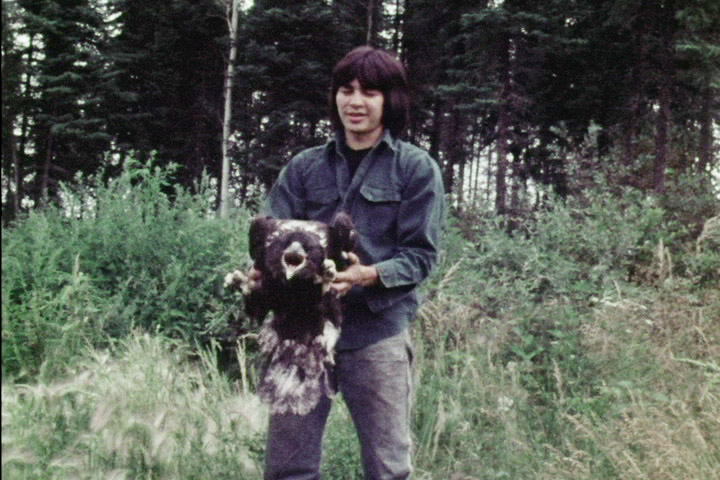

PROJECT INFORMATION:
Having completed several short films, Gregory Zbitnew directed
his first major
project during the summer of 1979, at age 24. He had applied to
Canada Arts Council,
and received an Explorations Grant in the amount of $6,227.00
to document life
in the small communities along the Hudson's Bay rail line between
The Pas and
Churchill in northern Manitoba. Gregory was familiar with the
region; having
graduated from the residential high school at Cranberry Portage
(near Flin Flon),
and from working in several of the communities along the rail
line. During the
winter prior to production, he had also conducted a solo research
expedition
to scout locations and meet interesting subjects for the film.
'Muskeg Special' was a local name for the train which lurched
over undulating
tracks built upon permanently frozen muskeg. Sleek blue rail cars,
streaked with
the word 'VIA' in large yellow letters, provided the main connection
between tiny
settlements supporting fishing activity on surrounding pristine
lakes and the networks
of trap lines which extended for many miles into the forests.
The pleasant qualities
of the tranquil north were reflected in the leisurely pace of
individuals who inhabited
cheerfully painted houses, and the serene natural beauty of the
landscape they enjoyed.
Following several months of organization, and with co-operation
from the
Winnipeg Film Group, Gregory gathered a crew, equipment, and 16mm
colour
filmstock, to twice make the 1,000 mile train trek from Winnipeg
to the port of
Churchill. On location from June 8 to June 23, 1979, the crew
then returned from
Aug. 1 to August 12th; arranging their schedule to coincide with
the arrival of the
first ship of the port's 50th year. The crew filmed aboard the
'Niko Maru', a Japanese
freighter which loaded prairie grain with the backdrop of Fort
Prince of Wales
(built in 1770 ~ North America's most northerly fortress), in
the distance.
Since VIA Rail had provided the adventurous crew with passes
for transportation,
Gregory organized the shooting schedule so that the crew were
able to film for two
or three days in each community, then board the train to travel
by night to the next location.
Frontier School Division graciously provided accommodation in
the smaller communities.
The crew stayed at a hotel in The Pas, and at a scientific research
station in Churchill.
The production went very well: approximately 11,000 feet (5.5
hours) of
16mm colour film (7247) were exposed, and 12 hours of audio tape
recorded.
Interviews were conducted in every community between The Pas and
Churchill;
Cormorant Lake, Wabowden, Thicket Portage, Pikwitonei, Illford
and Herchmer.
Due to the relatively small budget, while all of the original
negative was processed
at the time, only a portion of the footage could be printed. It
would take small grants
from the Manitoba Arts Council, Winnipeg Film Group, and Saskatchewan
Filmpool Co-op
during the next three years before all the footage could be projected.
During that time,
Gregory synchronized some of the film with its sound on 16mm magnetic
film,
and even transferred a portion of the footage to 3/4 inch (U-matic)
video for presentation.
And continually, Gregory attempted to obtain a sponsoring agency
to assist in completing
the project, yet would remain unsuccessful in securing funding.
Eventually, all the material was packaged for long-term storage,
and Gregory
continued with his film career; which later involved many years
of service in the animation
industry, multimedia production, and recently, the publication
of two novels.
Now, some 28 years after commencing the original production,
Gregory Zbitnew has finally
completed 'Muskeg Special'. The primary reason was that technology
has made it feasable
to digitize the film footage and audio, then edit the material
using Final Cut Pro on a Macintosh G5.
It is important that the unique content has been preserved, since
it documents a time and place
which still retains an almost mythical quality.